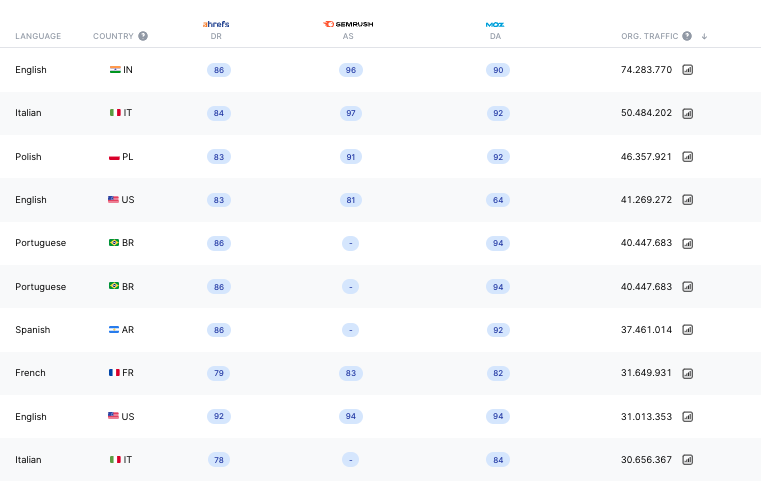Domain authority: The metric every marketer is talking about

So what is it about that Domain Authority (DA) that is so important?
Let’s take a brief trip down memory lane.
PageRank (PR) & Domain Authority (DA)
Domain Authority (DA) actually has its roots in Google’s original “PageRank” algorithm, developed by Larry Page and Sergey Brin in the late 1990s.
PageRank measured the importance of a webpage based on the quantity and quality of links pointing to it.
While PageRank itself is no longer directly used, Domain Authority has evolved as a more comprehensive metric that considers not only links but also factors like content relevance and site performance, offering a modern way to assess a site’s potential to rank in search engine results.
You’ve probably seen it mentioned frequently on our platform.
Domain Authority is a metric that gauges how “strong” a domain is compared to competitors. It ranges from 0 to 100, with higher values indicating greater strength.
In short, the higher your DA is, the better your chances of ranking in the SERP. And the stronger the DA, the better the quality of the backlink you receive.
MOZ coined the term
It’s important to know that Domain Authority (DA) is a metric created by MOZ to predict how likely a domain is to rank in search results. Google, on the other hand, has its own set of ranking factors, considering thousands of elements.
Every SEO tool has its own method of ranking domains. You may encounter different terms for these rankings, but ultimately, they all aim to evaluate and rank domains.
As you can see below, we’ve integrated these factors directly into Bazoom, making it easy to sort by them and find the right backlinks for your purpose.

The Domain Authority is based on a variety of factors, including:
- The age of the domain
- The quantity and quality of backlinks pointing to the domain
- The quality of content on the site
- The overall quality of the website (page speed, user experience, mobile friendliness etc.)
So in short.
Don’t rely on Domain Authority as the sole measure of a domain’s quality, but rather use it as a strong indicator.
If you have any questions regarding this, feel free just to reach out. We’d love to help.